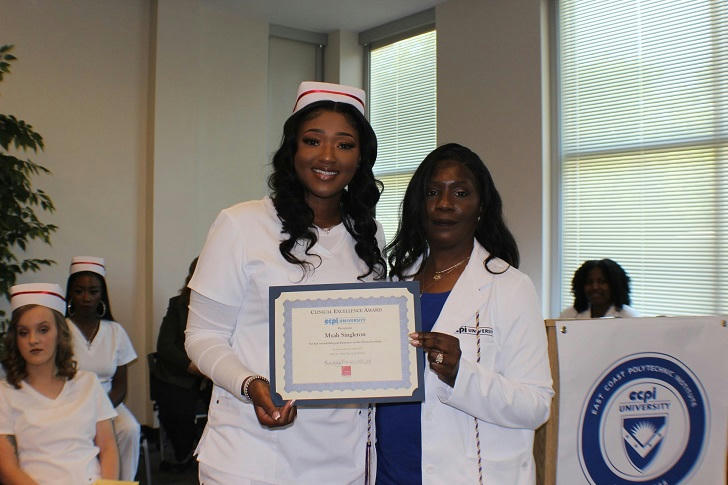The US government provides opportunities for free LPN courses - free and fast entry into the nursing industry
In the United States, licensed practical nurses (LPN) are an integral part of the healthcare industry. They provide basic nursing services to patients and work under the guidance of doctors and registered nurses. LPNs usually play an important role in hospitals, nursing homes, clinics, and home care. With the aging population and the increasing demand for the healthcare industry, the demand for LPNs is also growing steadily. However, entering this profession usually requires professional training and passing a certification exam to obtain a license.
1. Overview of government-funded LPN courses
In the United States, several government and non-profit agencies provide free or subsidized LPN training courses. These courses are designed to help people who aspire to become LPNs, especially those from low-income families or disadvantaged groups, enter the nursing industry through education without financial burden.
For example, the U.S. Department of Labor, through its Employment and Training Administration (ETA), provides funded training courses that are implemented through community colleges, technical colleges, vocational schools, etc. Through these programs, students can receive LPN course training and pass the qualification certification exam after completing the course to officially become a practicing nurse.

2. How to get free LPN courses
The free LPN courses provided by the US government usually involve the following channels:
- Vocational Training and Employment Services (WIOA)
The Workforce Innovation and Opportunity Act (WIOA) is an important program of the federal government that aims to provide vocational training and employment services to low-income and unemployed people. Through WIOA, eligible individuals can receive free or subsidized LPN training to enter the nursing industry. WIOA funds are usually used to pay for tuition, books, and other education-related expenses.
- Community Colleges and Technical Colleges
Community colleges and technical colleges in various states in the United States often work with the government to provide free LPN courses or provide tuition waivers for eligible students. For example, some community colleges in California offer free LPN courses to low-income students, and these courses are often funded by federal and state governments.
- Department of Veterans Affairs (VA)
For veterans, the U.S. Department of Veterans Affairs (VA) provides a variety of education and training benefits, including free LPN courses. Veterans can receive funding to pay for LPN training through the GI Bill or other veterans benefits.
- Federal and State Grant Programs
Many state governments also have specific grant programs for the nursing profession. For example, New Jersey's "Nursing Career Training Grant Program" provides free nursing career education, including LPN courses, especially for those with financial difficulties and unemployment. Through these programs, students can receive free nursing assistant training or LPN course training and eventually become caregivers.
3. Why choose a government-funded LPN course?
There are many obvious advantages to choosing a government-funded LPN course:
Reduced financial burden: Through government funding and scholarships, students can greatly reduce the cost of education and avoid the burden of student loans.
Good employment prospects: LPN is a profession in high demand. Through government-funded training programs, students not only gain professional knowledge in the field of nursing, but also find employment opportunities in various medical institutions.
Diverse career development opportunities: LPN is a threshold position for entering the nursing industry. Many LPN personnel further become registered nurses (RN) or higher-level nursing positions through work experience accumulation and advanced courses.
Social contribution: Government-funded LPN courses encourage students to work in poor and underserved areas and provide important nursing services to the community.
4. LPN certification and career prospects
After completing the LPN course, students must pass the National LPN Qualification Examination (NCLEX-PN) to obtain a license to practice. After passing the exam, students will obtain an LPN practice certificate and can work in various medical environments such as hospitals, nursing homes, and home care agencies.
According to the Bureau of Labor Statistics (BLS), LPN is one of the fastest growing occupations in the United States. It is expected that by 2030, employment of LPN positions will grow by 9%, which is higher than the average growth rate of all occupations. This growth is mainly due to the increase in the elderly population and the increasing demand for long-term care and home care services.
In the United States, the average annual salary of LPN is about $48,000, but this salary level varies according to the region, work experience and the agency. LPN's career prospects are very broad. They can not only work in traditional hospitals and clinics, but also find abundant employment opportunities in home care, rehabilitation centers, elderly care agencies and other fields.
5. How to apply for free LPN courses
Students who want to apply for free LPN courses provided by the government can do so in the following ways:
Visit local community colleges or technical colleges to find out if there are government-funded LPN courses.
Contact the U.S. Department of Labor and state employment service agencies for detailed information on WIOA and other vocational training subsidies.
Consult the Department of Veterans Affairs to find out how to use veterans' benefits to obtain funding for LPN courses. Search state government nursing education funding programs to see if there are any funding or free training opportunities for LPN courses.
The U.S. government provides free LPN courses to those who aspire to work in the nursing industry through various channels, lowering the economic barriers to entry into the nursing industry. These courses not only provide necessary nursing skills training, but also help students gain qualifications and opportunities for employment in the medical field. As the demand for nursing staff increases, free LPN courses provide a promising career path for those who intend to enter the nursing industry. Through these government-funded courses, students can not only gain professional knowledge and practical experience, but also establish a long-term and stable career in a growing industry.
